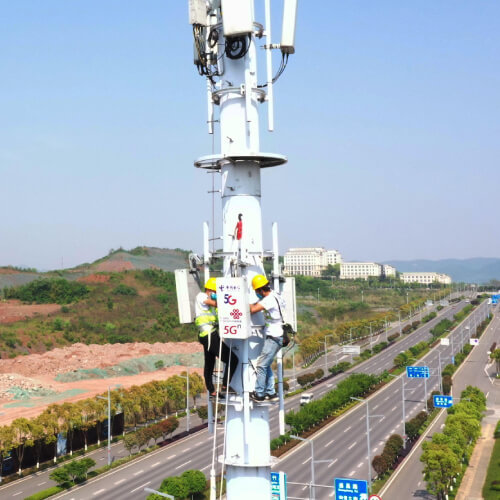
Network test and manufacturing equipment vendor Viavi paints a rosy picture for 5G, having compiled data showing 47 of the 70 economies with the highest GDP have now deployed the technology. Its State of 5G shows the number of 5G standalone (SA) networks has nearly doubled in 2022, while interest in mmWave spectrum has grown. All of this has prompted the company's CTO Sameh Yamany to conclude that "2022 was 5G’s graduation year," adding it has grown from "a developed markets phenomenon into a global phenomenon."
In 2022, 18 countries announced plans for their first 5G deployments, including India, Mexico, Angola, Portugal, Chile and Guatemala. In total, 2,497 cities in 92 countries have now deployed commercial 5G networks, says Viavi, with another 23 countries having launched pre-commercial trials. Meanwhile, 48 countries have not announced any plans for 5G rollouts, with Viavi noting that many are smaller island nations.
Overall, the EMEA region hosts most of the cities covered – some 1,015 – followed by Asia Pacific with 782 and the Americas with 700.
The US is in the lead with 503 cities that have coverage, compared to only 356 in China. This raises the question of what is considered a city. As of 2019, there were 662 cities in China, according to its own authorities. It is, meanwhile, difficult to establish what type of urban area is classed as a city in the US. The country's latest population census identified 804 municipalities with more than 50,000 inhabitants, with St. Louis Park taking the bottom position.
Figure 1:  China has the most 5G subscribers and basestations, and fastest data speeds, according to Viavi.
China has the most 5G subscribers and basestations, and fastest data speeds, according to Viavi.
(Source: Wang Quanchao/Xinhua/Alamy Live News)
When asked how cities were defined for the purposes of the research, a Viavi representative said the following in an emailed response to Light Reading: "Viavi used a variety of online resources to categorize if somewhere is considered a city or not. In the case of China, places that were considered 'prefecture-level cities' were also included since they have the same status as cities."
The reply also stated that "[it] is worth noting that US mobile operators have regularly released detailed information on their 5G locations whereas Chinese operators have focused more on subscription figures and the number of 5G towers installed. So, in that sense, information on Chinese cities has not been as readily available but every effort has been made to analyze the number of cities in China from publicly available information."
Viavi puts Finland third with 137 cities covered but adds that the Finnish word for city – "kaupunki" – can also mean municipalities. That implies the results could be influenced by differences in definitions.
The number of cities covered tells only one part of the story, with Viavi researchers noting that China remains ahead of the US in data speeds, 5G subscribers and the number of deployed basestations. The latter two points are perhaps unsurprising, given China's population is four times larger.
Technology challenges and monetization woes
Deployments have also grown for 5G SA, with 45 networks in place across 23 countries as of January, compared to the 24 networks in place a year earlier. The industry claims there are many benefits of 5G SA, including lower latency, its support for a large number of devices and voice over new radio technology, as well as faster network slicing.
Deploying a brand new core network is, however, a difficult undertaking. Technical challenges, while significant, are only one part of the problem, with uncertain monetization also acting as a deterrent.
Viavi's data also shows private networks are an important driver of 5G uptake, with the manufacturing sector responsible for 44% of such deployments. Viavi points out that the sectors where most private networks are deployed correspond to those "where IoT applications have evolved most strongly."
The vendor is also upbeat about mmWave's future, saying it has "garnered a lot of interest from diverse countries." It points out mmWave has been made available in areas including Vietnam, Indonesia, the Seychelles and Guam, as well as China, India and the US.
The mmWave spectrum offers faster speeds, lower latency and higher capacity than regular 5G deployments, but limited range and inability to penetrate glass or trees complicates deployments. As a result, few operators have deployed 5G networks in this band outside the US.
Viavi's views on 5G are somewhat more upbeat than its latest financial results. The vendor has warned of Q1 troubles amid a drop in product orders
Related posts:
— Tereza Krásová, Associate Editor, Light Reading
About the Author(s)
You May Also Like











